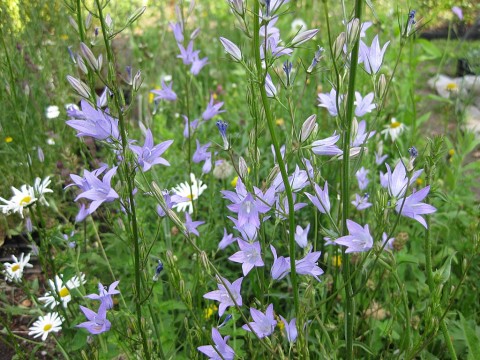Raponzoli
Scientific name: Campanula rapunculus.
the name campanula comes from the diminutive of bell for the apparent shape that characterizes the corolla of the species belonging to this genus; this name was given by physicist and German botanist Leonhart Fuchs (1501-1566) to a plant belonging to this genre definitely, then taken up by Tournefort and Linnaeus. Rapunculus is the diminutive of Latin rapum (turnip), then with the meaning of small turnip, in relation to the large taproot characteristic of this species.
It is a herbaceous plant that can grow 70-80 cm in height, with one, two or three white roots, basal leaves are shaped “rosetta”, which develop from late autumn until late spring, which emits a long stem with beautiful bells blue-purple color.
Since its root contains no starch but insulin which produces fructose instead of splitting glucose, can be safely consumed by diabetics.
Where to find it
Where to find it
The raponzoli in Garfagnana are collected from December to May.It’s possible to find it at all altitudes also above 1500 m.s.l. and prefers hills, uncultivated areas, meadows and even the roadsides.
The raponzoli in the kitchen:
It is a plant much sought after, much used in Garfagnana best consumed fresh in salads, both the leaves and the roots for their sweet taste and for insulin content. They can be eaten either alone or together with other “erbi” sweet and not bitter otherwise would cover the delicacy of its flavor.
Also good if boiled for cakes, soups and stews.







